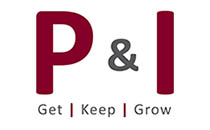Risk Management

Traditionally, the success criteria of a business were based on the level of profit. Today, things are more complicated but also more precise. The attention focuses on the performance which is balanced by the level of undertaken risk over a given period of time.
Expansion without adequate protection and security mechanisms does not ensure the sustainability of business. Risk management can turn expansion into sustainable growth. And this objective is a sustainability objective.
In addition, the distinction between risk and danger has become clear. Risk is taken “voluntarily” – by calculating possible losses. Dangers, however, are considered to occur due to extrinsic factors and are not a choice. Through a consistent and ongoing process, the business should identify, assess, manage, monitor and review the dangers it comes across. Surprises should be limited!
On the other hand, of course, the risk management is actually a security purchase and it is natural that it would involve an increase in costs. The real question is whether this combination is optimal. Whether the increase in costs or investment profits is unbiasedly proportioned to the risk taken, within the specific limits set by the company or the investor.
The above does not mean that risk should be avoided. The willingness to take risks is a fundamental requirement for the development and creation of new activities and businesses.
P&I is positioned at the core of business development activities and can provide credit risk management, market risk management, operational risk management, business risk management and reputation risk management framework for specific activities or the entire business.
